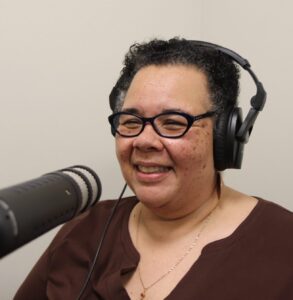
Suspending Time in the Classroom
“This class goes soooo fast!”
“Wait, we just started! … It’s over?”
“Doc, time in this class flies by.”
Recognizing when students are learning and when they are not can be a challenge. The above student comments are the kinds of feedback I yearned to hear. I would listen for how my students were engaging the materials and how the materials were engaging them. And, equally as important, I was listening for feedback concerning their experience of the course. Student feedback, even in the immediacy of a comment, can convey as much about student learning as reading their essays or grading their tests. When student comments were like those above, I knew I was achieving what I had planned. I knew I had suspended time in my classroom.
Suspending time in the classroom has less to do with planning the content of a course and more to do with sculpting/choreographing/composing the learner’s experience in the course. We know that form and function are important to any kind of design. In using our artist’s eye, we know that form and function are operative dynamics in all teaching sessions. Function, clearly and normally in our wheelhouse, is attended to through learning outcomes, prescribed disciplinary literature and overall school curriculum. Form, attended to only sparingly and only by a few, needs our awareness and much work. Better learning happens when teachers intentionally plan the forms of learning activities rather than relying upon the stale and traditional. Better forms of teaching invite learners into experiences of being engrossed, immersed, or swept up – into new ideas, provocative assertions, or deep examinations of relevant problems, aspirations, and new knowledge. An indication that we have selected the better form for teaching is when students report an experience of time being suspended.
We plan to suspend time in our classrooms so that students might become, for a little while, completely unself-conscious. Orchestrating and choreographing learning activities to assist students with being less incumbered, less distracted, and less fearful during class requires teachers who are aware of and who revel in the flow.
Entering into the flow is a common part of the creative process – a common part of daily living. Playing games like bid whist, backgammon, or video games where, at the end of the time together, it feels like time slowed as we enjoyed play, is a typical experience of the flow. People report that while engrossed in common tasks like gardening, writing, reading, or spirited dialogue, they felt swept up or transported to a place of relief and joy. People watching sporting events, or those who participate as athletes report that during play worries melt, concerns are no longer burdensome, and they experience a sense of realness or even euphoria. The flow are moments of intensity that seem to defy time.
Flow happens in classrooms when you and we love what we are working on and care about the students we are inviting into the mutual work of learning. An intensity is created. When we struggle to fall in love with our teaching work – when we can let go and work on what we are longing for, then classrooms have the possibility of giving way to flow, wading into flow, rocketing up to flow. Like the runner’s high or losing one’s self into the story while watching a movie, professors can create for students the feeling of being drawn up, swept up, in the best way.
While there are many aims of teaching, few are as important as assisting students with being present, riveted, captivated while together in learning – experiencing the flow while learning in classrooms. A central goal of teachers is to learn to guide students into the ability to focus upon the task at-hand, the now, the here, the being with one another. The paradox is that we are trying, in the moments of being most present, to forget ourselves and our petty problems, and for that duration of a class session, work collaboratively on saving the world and our own lives. We are teaching so we and they can learn to let go.
My suggestion for how to suspend time in classrooms might feel counter-intellectual. And, it might go against your pedagogical presumptions. My hope is that it will give you permission to tap more earnestly into your artistic self and creative processes. A key to assisting students in the classroom with the aim of better focus, resisting distractions, and being fully present, is, rather than demanding they think, invite students into activities of imagination, storytelling, and collaboration. Rather than reducing thinking to compliance with ideas and opinions, invite learners to work out complex ideas of injustice and formulate the activism, practices, strategies, and implications to do something about the injustices.
There is no one way to suspend time for your students. And, the way one teacher achieves this magic will not be how another teacher achieves it. Each teacher will have their own way. Some colleagues make use of complicated student projects and learning activities. Other colleagues craft and hone their facilitation skills. I have vivid memories of being swept up simply by discussing taboo ideas, ideas for which I had not had previous opportunity to explore or consider. Complexity, provocativity, or any number of other techniques allow time to be suspended.
“Professor! Where did the time go?”
Leave a Reply